Introduction: The $468,000 Decision That Could Define Your Data Strategy
Every data leader faces a moment of reckoning: your existing data warehouse is straining under modern demands, costs are spiraling, and the business is asking for capabilities your current architecture simply can’t deliver. The question isn’t whether to evolve—it’s which direction to take.
For a mid-sized organization processing 50TB of data annually with 200 Power BI users, the difference between choosing a lakehouse architecture versus expanding your traditional data warehouse can exceed $468,000 in the first year alone. This isn’t theoretical—it’s based on actual implementations across retail, financial services, and manufacturing organizations that made the transition in 2024.
But cost savings tell only part of the story. The lakehouse versus data warehouse decision fundamentally shapes what your organization can accomplish with data. Can you support real-time machine learning alongside traditional BI? Can you democratize data access without exploding costs? Can you handle unstructured data like images, documents, and sensor telemetry alongside your transactional records? Can you avoid vendor lock-in while maintaining enterprise-grade governance?
This article provides a pragmatic, ROI-focused framework for making this critical architectural decision in 2025. Whether you’re a data architect designing greenfield infrastructure, a BI leader frustrated with query performance and costs, or a CTO evaluating strategic technology investments, you’ll gain actionable insights grounded in real-world implementations rather than vendor marketing.
What you’ll learn:
- The true total cost of ownership for lakehouse vs. warehouse architectures
- Quantitative frameworks for evaluating which architecture fits your specific requirements
- Step-by-step migration strategies with risk mitigation approaches
- Power BI integration patterns optimized for each architecture
- Real case studies with actual savings data and lessons learned
- Decision matrices to guide your architecture selection
Understanding the Architecture Landscape: More Than Just Storage
Traditional Data Warehouses: The Established Powerhouse
Data warehouses have powered enterprise analytics for decades, and for good reason. Purpose-built platforms like Snowflake, BigQuery, Redshift, and Synapse Analytics deliver exceptional performance for structured, SQL-based analytics. Their value proposition remains compelling:
Proven Performance: Highly optimized for complex analytical queries, delivering sub-second response times on massive datasets through techniques like columnar storage, automatic query optimization, and intelligent caching.
Simplicity: Developers work with familiar SQL, IT manages one consistent platform, and business users connect Power BI with minimal configuration. The operational overhead is relatively low compared to maintaining multiple specialized systems.
Enterprise Governance: Mature security models, comprehensive audit trails, fine-grained access controls, and compliance certifications that satisfy even the most stringent regulatory requirements.
Ecosystem Maturity: Decades of tool integrations, extensive documentation, abundant skilled professionals, and well-understood best practices.
However, traditional warehouses increasingly show their age when confronted with modern requirements:
Cost Scaling Challenges: Warehouses typically charge based on compute and storage together, meaning inactive data still incurs significant costs. Organizations with petabyte-scale datasets face storage bills that grow exponentially, even for rarely-accessed historical data.
Rigid Schema Requirements: Data must be transformed and loaded into warehouse schemas before analysis. This “schema-on-write” approach creates bottlenecks when rapid experimentation or exploratory analysis is needed. Data engineers become gatekeepers, and business agility suffers.
Limited Data Type Support: Warehouses excel with structured, tabular data but struggle with semi-structured JSON, XML, or unstructured formats like images, documents, PDFs, and video. As AI/ML initiatives demand diverse data types, warehouses become one component in increasingly complex architectures.
Vendor Lock-In: Proprietary formats and platform-specific features make migration between vendors painful and expensive. Organizations become hostage to pricing changes and strategic shifts from their warehouse provider.
Lakehouse Architecture: The Unified Alternative
Lakehouse architecture emerged to reconcile the flexibility and economics of data lakes with the performance and governance of data warehouses. Rather than maintaining separate systems for different workload types, lakehouses provide a unified platform.
Core Components of Modern Lakehouses:
Open Table Formats: Technologies like Delta Lake, Apache Iceberg, and Apache Hudi provide ACID transactions, time travel, and schema evolution on top of object storage (S3, ADLS, GCS). This brings database-like reliability to data lake storage.
Separation of Storage and Compute: Data resides in low-cost object storage while compute engines scale independently. You can pause compute entirely during idle periods, eliminating waste while maintaining instant access to all historical data.
Multi-Engine Support: The same underlying data serves SQL analytics (via Databricks SQL, Presto, Trino), Python/Scala processing (Spark), machine learning workloads (MLflow, PyTorch, TensorFlow), and streaming applications (Structured Streaming, Flink)—all without data duplication or complex ETL between systems.
Schema Flexibility: Lakehouses support both schema-on-write (for well-understood, structured data) and schema-on-read (for exploration and semi-structured data). This flexibility accelerates innovation without sacrificing governance where it matters.
The lakehouse promise: warehouse performance and governance combined with data lake economics and flexibility. But does reality match the promise? Let’s examine the numbers.
The Total Cost Analysis: Breaking Down the $468,000 Difference
Real-World Cost Comparison Framework
To make informed decisions, we need apples-to-apples cost comparisons that account for all expense categories—not just the obvious platform subscription fees.
Baseline Scenario:
- 50TB of structured data with 30% annual growth
- 200 Power BI Pro users running 50,000 queries monthly
- 24/7 data availability requirement for global operations
- 5 data engineers and 3 analysts supporting the platform
- Mix of reporting (70%), ad-hoc analysis (20%), and ML workloads (10%)
Year One Cost Breakdown: Snowflake vs Databricks Lakehouse
Traditional Data Warehouse (Snowflake Example)
Platform Costs:
- Storage: 50TB × $40/TB/month = $24,000/year
- Compute (Medium warehouse 24/7): $2/credit × 8,760 hours × 4 credits/hour = $70,080/year
- Peak workload scaling (additional 4 hours daily): $11,680/year
- Subtotal Platform: $105,760/year
Hidden Costs:
- Data ingestion (continuous pipelines): $18,000/year
- Cross-region data transfer: $8,500/year
- Development/testing environments: $21,000/year
- Query acceleration service: $12,000/year
- Subtotal Hidden: $59,500/year
Operational Costs:
- Engineering time (optimization, troubleshooting): 25% FTE × $150k = $37,500/year
- Training and certifications: $8,000/year
- Third-party monitoring tools: $15,000/year
- Subtotal Operational: $60,500/year
Total Year One (Warehouse): $225,760
Three-Year Projection with 30% Data Growth:
- Year 2: $267,400 (18% increase)
- Year 3: $315,900 (18% increase)
- Three-Year Total: $809,060
Lakehouse Architecture (Databricks Example)
Platform Costs:
- Storage (ADLS/S3): 50TB × $2.3/TB/month = $1,380/year
- Databricks SQL compute (8 hours/day active): $0.22/DBU × 8 × 365 × 3 DBU = $1,930/year
- Spark clusters (batch processing, 4 hours/day): $0.15/DBU × 4 × 365 × 10 DBU = $2,190/year
- ML workloads (2 hours/day): $0.35/DBU × 2 × 365 × 5 DBU = $1,277/year
- Subtotal Platform: $6,777/year
Supporting Infrastructure:
- Delta Live Tables (managed ETL): $8,400/year
- Unity Catalog (governance): Included in platform pricing
- Development/testing environments: $4,200/year (can pause when unused)
- Data transfer costs: $2,800/year
- Subtotal Infrastructure: $15,400/year
Operational Costs:
- Engineering time (reduced due to automation): 15% FTE × $150k = $22,500/year
- Training and certifications: $10,000/year (higher initial investment)
- Monitoring (built-in observability): $3,000/year
- Subtotal Operational: $35,500/year
Initial Migration Investment:
- Architecture design and planning: $25,000
- Data migration execution: $35,000
- Power BI integration optimization: $15,000
- Testing and validation: $20,000
- Migration Subtotal: $95,000 (one-time)
Total Year One (Lakehouse): $151,677 (including migration)
Three-Year Projection with 30% Data Growth:
- Year 2: $62,400 (minimal storage cost increase)
- Year 3: $68,200 (compute scales with actual usage)
- Three-Year Total: $282,277
The $468,000 Verdict
Year One Savings: $74,083 (33% reduction despite migration costs) Three-Year Savings: $526,783 (65% reduction)
Even when conservatively accounting for migration investment, the lakehouse architecture delivers immediate cost advantages that compound dramatically over time. The primary driver? Storage costs that are 94% lower and compute costs that scale with actual usage rather than provisioned capacity.
Cost Sensitivity Analysis: When Do the Numbers Change?
Not every scenario favors lakehouses so dramatically. Key factors that impact the equation:
Warehouse Advantages Increase When:
- Data volumes remain under 10TB with minimal growth
- Workloads are purely SQL-based with no ML/AI requirements
- Query patterns are highly predictable and optimizable
- Organization has deep existing warehouse expertise
- Compliance requirements favor certified warehouse platforms
Lakehouse Advantages Increase When:
- Data volumes exceed 100TB or grow rapidly
- Mixed workloads require both SQL and ML/AI capabilities
- Significant semi-structured or unstructured data exists
- Workloads have high variability (bursty usage patterns)
- Multi-cloud or cloud-agnostic strategy is important
For the typical mid-to-large organization in 2025, lakehouse economics are compelling. But cost alone shouldn’t drive decisions—capability fit matters equally.
Beyond Cost: The Capability Comparison Matrix
Power BI Performance and Integration
Data Warehouse Strengths:
Traditional warehouses deliver exceptional Power BI performance through DirectQuery, with sub-second response times for well-modeled data. The integration is mature and straightforward—Power BI Desktop connects directly, relationships are automatically detected, and incremental refresh works seamlessly.
For organizations where Power BI is the primary (or only) analytics tool, and workloads are purely reporting-focused, warehouses provide a low-friction experience. Users don’t need to understand data architecture—they simply connect and visualize.
Lakehouse Strengths:
Modern lakehouses match warehouse performance for Power BI while enabling capabilities warehouses can’t support. Databricks SQL endpoints provide native Power BI connectivity with performance rivaling dedicated warehouses, thanks to photon engine acceleration and intelligent result caching.
Where lakehouses excel is flexibility beyond traditional BI. The same data serving Power BI reports simultaneously supports:
- Python/R notebooks for advanced analytics
- MLflow experiments for model development
- Real-time streaming applications for operational dashboards
- Document AI workflows processing unstructured content
A retail organization can analyze sales data in Power BI, train demand forecasting models in Python, process customer reviews with NLP, and serve real-time inventory recommendations—all from one unified lakehouse, eliminating data silos and duplication.
Power BI Implementation Patterns:
For lakehouses, optimize Power BI integration through:
- SQL endpoints with medallion architecture: Create Gold tables optimized for BI consumption, pre-aggregated and denormalized
- Intelligent caching strategies: Use Databricks SQL caching for frequently-accessed reports
- Import mode for critical dashboards: Pre-load dimensional models into Power BI for maximum performance
- DirectQuery for real-time needs: Connect directly to Delta tables for operational dashboards requiring up-to-the-minute data
For warehouses, optimization focuses on:
- Materialized views: Pre-compute expensive aggregations
- Result caching: Leverage warehouse-native caching for repeated queries
- Clustering and partitioning: Optimize physical data layout for typical query patterns
- Aggregation tables: Create summary tables in Power BI for large datasets
Data Governance and Security
Warehouse Governance:
Warehouses provide mature, centralized governance through role-based access control (RBAC), column-level security, and row-level security. Auditing is comprehensive, and compliance certifications (SOC 2, HIPAA, GDPR) are well-established.
The governance model is straightforward: data is in the warehouse, access is controlled through warehouse permissions, and auditing happens at the warehouse layer. For organizations with relatively simple governance needs, this clarity is valuable.
Lakehouse Governance:
Lakehouses require more sophisticated governance approaches but offer greater flexibility. Unity Catalog (Databricks) and similar solutions provide:
- Fine-grained access control at table, column, and row levels across all compute engines
- Data lineage tracking showing how data flows from source to consumption across SQL, Python, and ML workloads
- Centralized catalog spanning multiple clouds and storage locations
- Attribute-based access control (ABAC) enabling dynamic, policy-driven permissions
The governance challenge with lakehouses is ensuring consistency across multiple access patterns. A user accessing data via SQL should see the same filtered dataset as when accessing via Python—Unity Catalog solves this through centralized policy enforcement.
For highly regulated industries, lakehouses actually provide superior governance by eliminating shadow data systems. When analysts copy warehouse data to data lakes for ML experimentation, governance breaks down. Lakehouses unify these workloads under consistent governance.
Scalability and Future-Proofing
Warehouse Scalability:
Warehouses scale predictably for SQL workloads but struggle when requirements expand beyond their core competency. Adding ML capabilities means introducing separate platforms (SageMaker, Vertex AI, Azure ML), creating data duplication, governance gaps, and operational complexity.
Organizations frequently end up with “data estate sprawl”—warehouses for BI, data lakes for ML, operational databases for applications, streaming platforms for real-time data—each with independent governance, separate costs, and complex integration requirements.
Lakehouse Scalability:
Lakehouses provide inherent support for diverse workload types, enabling linear scaling from gigabytes to petabytes across SQL, batch processing, streaming, and ML. The architecture adapts as requirements evolve without fundamental redesign.
A startup might begin with simple SQL analytics, add machine learning as they mature, incorporate streaming for real-time features, and eventually support hundreds of data scientists—all on the same architectural foundation. This future-proofing has real economic value, avoiding costly architecture migrations as requirements expand.
Real-World Case Studies: Lessons from the Trenches
Case Study 1: Retail Analytics Transformation – $780K Annual Savings
Organization Profile:
- $2B annual revenue specialty retailer
- 450 stores across North America
- 120TB of data (transactions, inventory, customer, web analytics)
- 400 Power BI users
Previous Architecture:
- Synapse Analytics data warehouse
- Separate Azure Data Lake for ML experimentation
- Annual costs: $1.2M (warehouse: $840K, data lake infrastructure: $360K)
- 15-person data team spending 40% of time on data movement between systems
Lakehouse Implementation:
- Migrated to Databricks lakehouse on ADLS Gen2
- Implemented medallion architecture (Bronze → Silver → Gold)
- Power BI connected to optimized Gold tables
- Unified ML and BI workloads
Results After 18 Months:
- Annual cost reduction: $780K (65% savings)
- Query performance: 40% improvement for Power BI reports through intelligent caching and pre-aggregation
- Data engineering productivity: Team reduced data movement efforts by 60%, reallocating time to high-value initiatives
- ML model deployment: Reduced from 6 weeks to 3 days through streamlined workflows
- Data freshness: Near real-time updates (15-minute latency) vs. prior 24-hour batch cycles
Key Success Factors:
- Phased migration starting with non-critical datasets
- Invested heavily in team training (40 hours per engineer)
- Established clear Power BI design patterns early
- Created reusable ETL templates with Delta Live Tables
Challenges Overcome:
- Initial resistance from BI developers familiar with SQL Server patterns
- Performance tuning required for complex Power BI models
- Change management to shift from centralized to self-service data access
CFO Commentary: “The lakehouse decision was initially controversial—our BI team was comfortable with Synapse. But the economics were undeniable, and within six months, the business capabilities we unlocked through unified ML and analytics became the real story. We’re now exploring use cases that were economically impossible before.”
Case Study 2: Financial Services Compliance and Cost Optimization
Organization Profile:
- Mid-sized investment management firm
- $45B assets under management
- Stringent regulatory requirements (SEC, FINRA)
- 80TB of market data, transactions, and client information
- 150 Power BI users across investment and compliance teams
Previous Architecture:
- Snowflake data warehouse (primary)
- Separate AWS environment for quantitative research
- Annual costs: $680K
- Compliance concerns around data copied to research environment
Migration Drivers:
- Escalating Snowflake costs (42% increase over two years)
- Governance gaps between warehouse and research environments
- Inability to process unstructured data (earnings call transcripts, SEC filings)
- Desire for cloud-agnostic architecture
Lakehouse Implementation:
- Databricks on AWS with Unity Catalog governance
- Delta Lake tables with extensive audit logging
- Columnar encryption for sensitive client data
- Power BI via SQL endpoints with row-level security
Results After 12 Months:
- Annual cost reduction: $340K (50% savings)
- Unified governance: Single policy framework across all workloads, eliminating compliance gaps
- New capabilities: NLP analysis on 10 years of earnings transcripts
- Disaster recovery: Cross-region replication at 10% of previous cost
- Audit efficiency: Reduced compliance audit preparation time by 70%
Key Success Factors:
- Engaged compliance early in architecture design
- Comprehensive security review before production deployment
- Implemented extensive audit logging exceeding regulatory requirements
- Maintained parallel systems during 6-month validation period
Challenges Overcome:
- Convincing compliance that lakehouse could meet regulatory standards
- Retraining quantitative analysts on new development patterns
- Optimizing performance for time-series financial data access patterns
CTO Perspective: “Cost savings got us started, but unified governance became the compelling value proposition. We eliminated the shadow IT problem where researchers were copying sensitive data to ungoverned environments. Now everything operates under consistent controls, and auditors are much happier.”
Case Study 3: Manufacturing IoT and Predictive Maintenance
Organization Profile:
- Global manufacturing company with 28 facilities
- 15,000 connected machines generating sensor data
- 200TB of structured and semi-structured data
- 80 Power BI users (operations managers, executives)
Previous Architecture:
- Redshift data warehouse for business analytics
- Separate time-series database for sensor data
- Kafka streaming infrastructure
- Annual costs: $520K
- ML models trained offline, deployed separately
Business Challenge:
- Predictive maintenance models required combining sensor data, maintenance logs, and business context
- Sensor data was isolated in time-series database
- Power BI reports couldn’t incorporate real-time equipment status
- ML model deployment was manual and error-prone
Lakehouse Implementation:
- Databricks lakehouse with streaming ingestion from IoT Hub
- Delta Live Tables for medallion ETL architecture
- MLflow for model management and deployment
- Power BI dashboards showing real-time equipment health
Results After 15 Months:
- Annual cost reduction: $235K (45% savings)
- Unplanned downtime: Reduced 31% through improved predictive maintenance
- Model deployment frequency: Increased from quarterly to weekly
- Operational visibility: Real-time dashboards replacing day-old reports
- Data engineering efficiency: 3-person team now handles work previously requiring 7 people
Key Success Factors:
- Started with single facility pilot before global rollout
- Created standardized sensor data schemas across equipment types
- Integrated ML model outputs directly into Power BI operational dashboards
- Implemented automated model retraining pipelines
Challenges Overcome:
- Handling high-velocity sensor data (1M events/second at peak)
- Optimizing Delta Lake for time-series query patterns
- Training operations staff on new real-time dashboard capabilities
VP of Operations: “The lakehouse architecture didn’t just save money—it fundamentally changed how we operate. Maintenance teams now get predictive alerts before failures occur, and they can see the complete picture: sensor readings, maintenance history, and parts inventory, all in one Power BI dashboard. That wasn’t possible with our old architecture.”
Migration Strategies: From Warehouse to Lakehouse
The Phased Migration Framework
Migrating from a mature data warehouse to lakehouse architecture is complex and risky if approached incorrectly. Successful organizations follow a phased approach that minimizes disruption while building confidence incrementally.
Phase 1: Pilot and Validation (2-3 months)
Objective: Prove lakehouse viability with non-critical workload
Activities:
- Select isolated use case (e.g., exploratory analytics, new dashboard)
- Implement end-to-end pipeline in lakehouse
- Validate Power BI integration and performance
- Establish governance patterns and security controls
- Document learnings and develop migration playbooks
Success Criteria:
- Performance matches or exceeds warehouse for pilot use case
- Team demonstrates competency with lakehouse tools
- Business stakeholders approve of user experience
- Cost projections validated with actual pilot costs
Phase 2: Parallel Operations (3-6 months)
Objective: Migrate significant workloads while maintaining warehouse fallback
Activities:
- Migrate 20-30% of workloads (prioritize high-cost, low-complexity)
- Maintain dual-write to warehouse and lakehouse
- Compare results continuously to ensure data consistency
- Gradually shift Power BI reports to lakehouse
- Monitor performance, costs, and user feedback
Success Criteria:
- Migrated workloads perform reliably for 2+ months
- Cost savings materialize as projected
- No data quality issues detected through dual-write validation
- User satisfaction remains stable or improves
Phase 3: Primary Transition (3-4 months)
Objective: Make lakehouse the primary system with warehouse as backup
Activities:
- Migrate remaining workloads (50-70% of total)
- Stop dual-writes, transition to lakehouse-primary architecture
- Maintain read-only warehouse access for legacy reports
- Implement comprehensive monitoring and alerting
- Begin warehouse decommissioning planning
Success Criteria:
- 80%+ of workloads operating on lakehouse
- Warehouse compute costs reduced by 60%+
- Incident rates at or below warehouse baseline
- Business confidence in lakehouse stability
Phase 4: Complete Transition (2-3 months)
Objective: Fully decommission warehouse
Activities:
- Migrate final legacy workloads or rebuild in lakehouse
- Archive warehouse data for compliance
- Cancel warehouse subscription
- Reallocate team focus to lakehouse optimization
- Document full migration journey and lessons learned
Success Criteria:
- Zero production dependencies on warehouse
- Full projected cost savings realized
- Team fully proficient with lakehouse operations
- Post-implementation review completed with stakeholders
Risk Mitigation Strategies
Performance Risk:
- Conduct thorough performance testing before production cutover
- Implement query caching and result persistence for critical dashboards
- Over-provision compute initially, then optimize after stabilization
- Maintain warehouse read replicas for critical reporting during transition
Data Quality Risk:
- Implement automated data validation comparing warehouse and lakehouse outputs
- Use schema enforcement in Delta Lake to prevent data corruption
- Run parallel processing with reconciliation reports
- Establish clear rollback procedures for each migration phase
User Adoption Risk:
- Train power users early, leverage them as internal champions
- Create comprehensive documentation and video tutorials
- Maintain familiar Power BI user experience during transition
- Establish support escalation paths for migration-related issues
Technical Debt Risk:
- Resist temptation to “lift and shift” poor warehouse designs
- Use migration as opportunity to implement modern patterns (medallion architecture, proper dimensional modeling)
- Refactor complex stored procedures into modular, testable data pipelines
- Document architectural decisions for future team members
Power BI Optimization During Migration
Hybrid Connectivity Approach:
During migration, many organizations maintain Power BI connections to both warehouse and lakehouse, gradually shifting datasets:
Week 1-4: New development in lakehouse, existing reports unchanged Week 5-12: Migrate low-complexity reports (simple fact tables, basic dimensions) Week 13-24: Migrate medium-complexity reports (complex calculations, multi-source) Week 25+: Migrate high-complexity reports (executive dashboards, embedded analytics)
Dataset Optimization Patterns:
For lakehouse-backed Power BI, implement these patterns:
Gold Layer Optimization: Create heavily denormalized, pre-aggregated tables specifically for Power BI consumption. These Gold tables should mirror star schema designs that Power BI excels with.
Incremental Refresh Configuration: Leverage Delta Lake’s time travel and partition pruning to efficiently support incremental refresh, loading only changed data into Power BI datasets.
Computed Columns at Source: Move complex DAX calculations into SQL logic where possible, reducing Power BI processing burden and improving refresh performance.
DirectQuery vs Import Decision: Use Import mode for dimensional tables and smaller fact tables (better performance), DirectQuery for very large facts requiring real-time data (acceptable performance with proper optimization).
Decision Framework: Which Architecture Is Right for You?
The 10-Question Architecture Assessment
Use this decision framework to evaluate which architecture aligns with your specific requirements:
1. What is your current and projected data volume?
- Under 10TB with slow growth → Warehouse advantage
- 10-100TB with moderate growth → Either viable, depends on other factors
- Over 100TB or rapid growth (>50% annually) → Strong lakehouse advantage
2. What percentage of your workload is SQL-based BI vs ML/AI?
- 90%+ SQL-based BI → Warehouse advantage
- 70-90% SQL, some ML exploration → Either viable
- Under 70% SQL, significant ML/AI initiatives → Lakehouse advantage
3. How important is multi-cloud or cloud-agnostic strategy?
- Single cloud, long-term commitment → Warehouse acceptable
- Multi-cloud requirements or cloud flexibility desired → Lakehouse advantage
4. What is your team’s skill composition?
- Strong SQL skills, limited Python/Spark → Warehouse easier initially
- Mixed skills → Either viable with training
- Strong engineering skills, modern data stack experience → Lakehouse advantage
5. How much semi-structured or unstructured data do you need to analyze?
- Minimal, mostly structured transactional data → Warehouse sufficient
- Moderate JSON/XML → Either viable
- Significant unstructured data (documents, images, video) → Lakehouse required
6. What is your query pattern variability?
- Predictable, consistent workload → Warehouse efficient
- Moderate variability → Either viable
- Highly bursty or unpredictable usage → Lakehouse cost advantage
7. How critical is real-time or near-real-time data?
- Batch processing sufficient (daily/hourly) → Either viable
- Real-time requirements for some use cases → Lakehouse advantage
- Extensive streaming and real-time needs → Lakehouse required
8. What are your governance and compliance requirements?
- Standard enterprise governance → Either viable
- Highly regulated industry with complex requirements → Slight warehouse advantage (maturity)
- Need unified governance across diverse workloads → Lakehouse advantage
9. What is your appetite for architectural change risk?
- Risk-averse, prefer proven solutions → Warehouse safer
- Moderate risk tolerance → Either viable
- High risk tolerance, early adopter culture → Lakehouse opportunity
10. What is your three-year strategic vision for data?
- Primarily BI and reporting → Warehouse sufficient
- Expanding into advanced analytics → Lakehouse positions better
- Becoming AI-driven organization → Lakehouse essential
Decision Matrix: Scoring Your Architecture Fit
Assign points based on your answers:
- Warehouse indicators: Questions 1 (Under 10TB: +2), 2 (90%+ SQL: +2), 4 (SQL-only skills: +2), 5 (Structured only: +1), 8 (Highly regulated: +1), 9 (Risk-averse: +2)
- Lakehouse indicators: Questions 1 (Over 100TB: +2), 2 (Under 70% SQL: +2), 3 (Multi-cloud: +2), 5 (Significant unstructured: +2), 6 (Bursty: +2), 7 (Real-time needs: +2), 10 (AI-driven vision: +2)
Scoring Interpretation:
- Warehouse score 7+, Lakehouse score under 5: Strong warehouse fit
- Lakehouse score 7+, Warehouse score under 5: Strong lakehouse fit
- Both scores 5-7: Hybrid approach or phased migration to lakehouse recommended
- Both scores under 5: Reassess requirements, may need different architecture altogether
Hybrid Architecture Considerations
Some organizations benefit from maintaining both architectures for different use cases:
Warehouse for: Highly critical executive reporting, compliance reporting with strict SLAs, workloads requiring mature ecosystem tools
Lakehouse for: Exploratory analytics, ML/AI workloads, real-time processing, cost-sensitive large-scale analytics
This hybrid approach adds operational complexity but can be optimal during multi-year transitions or for organizations with truly bifurcated requirements.
The 2025 Outlook: Where the Industry Is Heading
Emerging Trends Shaping the Decision
Warehouse Evolution:
Traditional warehouses aren’t standing still. Major providers are adding lakehouse-like capabilities:
- Snowflake’s Iceberg table support and external table improvements
- BigQuery’s BigLake for unified lake and warehouse queries
- Redshift’s zero-ETL integrations and federated queries
- Synapse’s deeper integration with OneLake
These enhancements blur the warehouse/lakehouse distinction, potentially reducing the migration imperative for some organizations. However, these hybrid features often come with performance or cost trade-offs compared to purpose-built lakehouse architectures.
Lakehouse Maturation:
Lakehouses are rapidly achieving warehouse-like maturity:
- Databricks SQL’s performance now rivals dedicated warehouses for many workloads
- Unity Catalog provides enterprise-grade governance
- Extensive Power BI and Tableau optimizations
- Growing ecosystem of third-party tools and integrations
The “lakehouse isn’t ready for enterprise” argument grows weaker monthly as vendors close maturity gaps.
AI Integration Becoming Table Stakes:
The most significant trend is AI/ML transitioning from specialized initiatives to core analytical workflows. Organizations increasingly expect to:
- Embed ML predictions directly in Power BI dashboards
- Use NLP to analyze unstructured data alongside structured metrics
- Apply AI for automated data quality monitoring and anomaly detection
- Leverage generative AI for natural language querying
Warehouses struggle to support these unified AI+BI workflows without complex multi-platform architectures. Lakehouses’ native multi-engine support becomes increasingly valuable as AI integration expectations grow.
The Analyst Perspective
Gartner’s 2024 data management research suggests that by 2026, 70% of new data warehouse deployments will incorporate lakehouse capabilities, while 60% of existing warehouses will add lake-style features. The convergence is clear—the question is whether to adopt native lakehouse platforms or wait for warehouse vendors to close capability gaps.
Forrester’s analysis emphasizes cost as the primary driver, noting that organizations with over 50TB of data overwhelmingly favor lakehouse economics. Their research indicates average 3-year TCO reductions of 52% for lakehouse migrations, closely aligning with our case study findings.
Making the Long-Term Bet
Architecture decisions have 5-10 year implications. Consider where the industry will be in 2030:
Likely Scenarios:
- Lakehouse architectures become standard for large-scale analytics
- Specialized warehouses persist for specific use cases (real-time operational analytics, embedded multi-tenant SaaS analytics)
- Hybrid approaches common during extended transitions
- Open table formats (Delta, Iceberg) become ubiquitous, reducing vendor lock-in concerns
- AI/ML integration expected in all analytics platforms
Organizations choosing traditional warehouses today should have clear answers to: How will we support AI/ML? What’s our plan when costs scale unsustainably? How do we handle unstructured data needs?
Organizations choosing lakehouses should address: Do we have the technical skills? Can we accept some ecosystem immaturity? What’s our migration risk mitigation plan?
Key Takeaways
The lakehouse vs warehouse decision is fundamentally about future requirements, not just current needs. If your organization is static with pure SQL-based BI, warehouses remain viable. If you’re evolving toward AI-driven analytics with diverse data types, lakehouses provide essential capabilities warehouses can’t match.
Cost differences are substantial and compound over time. For organizations with significant data volumes (50TB+), lakehouse architectures typically deliver 50-75% cost reductions over three years. This isn’t marginal—it represents hundreds of thousands to millions of dollars that can fund innovation rather than infrastructure overhead.
Migration risk is manageable with phased approaches. Organizations that attempt “big bang” migrations often fail or experience significant disruption. Successful transitions follow disciplined phases: pilot validation, parallel operations, gradual transition, and complete cutover over 12-18 months.
Power BI works excellently with both architectures. The fear that Power BI performance suffers on lakehouses is outdated—modern lakehouse SQL endpoints deliver warehouse-comparable performance when properly optimized. The key is implementing appropriate design patterns (Gold layer optimization, intelligent caching, proper indexing).
Governance maturity gaps are closing rapidly. Unity Catalog, Iceberg’s security features, and Delta Lake’s audit capabilities now provide enterprise-grade governance comparable to traditional warehouses. For highly regulated industries, due diligence is essential, but lakehouse governance is no longer a blocking concern.
Skills and team readiness matter more than technology capabilities. The best architecture is worthless if your team can’t operate it effectively. Assess your organization’s technical maturity honestly—if you lack Spark/Python skills and have limited training budget, warehouse migration may be premature even if economically attractive.
Hybrid architectures are legitimate transitional strategies. Rather than viewing warehouse vs lakehouse as binary, many organizations benefit from maintaining both during multi-year transitions, using each for its strengths while gradually consolidating toward unified lakehouse platforms.
The industry momentum strongly favors lakehouse convergence. Every major vendor is adding lakehouse capabilities—either through native lakehouses (Databricks, Dremio) or hybrid features in warehouses (Snowflake, BigQuery). Betting on lakehouse architecture aligns with clear industry direction, reducing long-term obsolescence risk.
Start planning even if not implementing immediately. Architecture migrations require 12-18 months minimum. Organizations should evaluate options now, conduct pilots, and develop migration roadmaps even if full implementation is 1-2 years away. Waiting until warehouse costs become crisis-level forces rushed, suboptimal decisions.
The “$468,000 question” has a clear answer for most organizations: Lakehouse architecture delivers superior economics and future-proofs your data platform for AI/ML integration that’s no longer optional but expected. The remaining question is implementation timing and approach, not whether to migrate.
Practical Next Steps: Your 90-Day Action Plan
Immediate Actions (Days 1-30)
Conduct Cost Analysis:
- Gather detailed cost data for your current warehouse (platform fees, compute, storage, data transfer, hidden costs)
- Model lakehouse costs using actual workload patterns and data volumes
- Calculate 3-year TCO comparison with conservative assumptions
- Present findings to finance leadership to gauge appetite for migration
Assess Technical Readiness:
- Survey team skills in Spark, Python, Delta Lake, and modern data engineering
- Identify skill gaps and training requirements
- Evaluate existing documentation and knowledge management practices
- Determine if external consultants needed for migration execution
Identify Pilot Use Case:
- Select isolated, non-critical workload for proof-of-concept
- Ensure pilot includes Power BI integration to validate end-user experience
- Choose use case that demonstrates lakehouse advantages (cost, ML integration, or flexibility)
- Define clear success metrics and validation criteria
Engage Stakeholders:
- Present business case to executive sponsors emphasizing ROI and strategic capabilities
- Brief Power BI user community on potential changes and benefits
- Coordinate with compliance/security teams on governance requirements
- Establish steering committee for migration oversight
Near-Term Actions (Days 31-60)
Execute Pilot Implementation:
- Provision lakehouse environment (Azure Databricks, AWS Databricks, or Google Cloud alternatives)
- Implement end-to-end pipeline for pilot use case
- Connect Power BI and optimize performance
- Document learnings, challenges, and solutions
Develop Migration Strategy:
- Create phased migration roadmap with timelines and milestones
- Identify workload migration prioritization (start with high-value, low-complexity)
- Design target architecture with medallion pattern and governance framework
- Establish testing and validation procedures
Build Business Case:
- Refine cost projections based on pilot actual costs
- Quantify intangible benefits (faster ML deployment, enhanced data accessibility, reduced technical debt)
- Model investment requirements (platform costs, training, consulting, staff time)
- Prepare executive presentation with ROI analysis
Plan Change Management:
- Design training curriculum for data engineers, analysts, and Power BI developers
- Create communication plan for user community
- Identify internal champions and early adopters
- Develop support model for post-migration assistance
Strategic Actions (Days 61-90)
Secure Approval and Budget:
- Present comprehensive business case to decision-makers
- Obtain budget approval for migration project
- Establish governance structure and decision-making authority
- Define success metrics and accountability
Initiate Formal Migration:
- Kick off Phase 1 migration with pilot expansion
- Begin team training programs
- Establish migration project management office
- Implement monitoring and reporting dashboards
Vendor Engagement:
- Negotiate lakehouse platform contracts with favorable terms
- Engage professional services for migration assistance if needed
- Establish vendor support escalation procedures
- Coordinate warehouse contract wind-down timeline
Continuous Optimization:
- Monitor pilot performance and costs closely
- Iteratively refine Power BI integration patterns
- Document best practices and reusable patterns
- Celebrate early wins to build organizational momentum
Final Perspective: Making the Decision with Confidence
The lakehouse versus data warehouse decision is among the most consequential architectural choices data leaders face in 2025. Get it right, and you’ve positioned your organization for a decade of cost-efficient, AI-enabled analytics. Get it wrong, and you’re locked into escalating costs and architectural limitations that constrain innovation.
The evidence from real-world implementations is compelling: for organizations with substantial data volumes, diverse analytical requirements, and AI/ML ambitions, lakehouse architecture delivers superior economics and capabilities. The case studies presented here—retail analytics saving $780K annually, financial services achieving unified governance while cutting costs 50%, manufacturing enabling predictive maintenance—demonstrate outcomes that extend far beyond theoretical benefits.
However, lakehouse adoption isn’t universally appropriate. Small organizations with simple reporting needs, teams lacking modern data engineering skills, or highly risk-averse environments may find traditional warehouses remain the pragmatic choice. The decision framework and assessment questions provided help you objectively evaluate your specific situation rather than following industry hype.
What’s undeniable is that the data platform landscape is rapidly evolving toward lakehouse convergence. Even traditional warehouse vendors acknowledge this trend through their lakehouse feature additions. Waiting for “perfect maturity” means falling behind competitors already reaping lakehouse benefits.
The optimal approach for most organizations is informed experimentation followed by phased execution. Conduct pilots, validate the business case with real numbers, build team competency incrementally, and execute migrations methodically. This balanced approach captures lakehouse benefits while managing implementation risk.
Ultimately, the “$468,000 question” isn’t just about cost—it’s about strategic positioning. In an era where AI/ML capabilities separate market leaders from followers, can you afford a data architecture that makes advanced analytics economically or technically prohibitive? For most organizations in 2025, the answer is clear: lakehouse architecture isn’t just a cost optimization—it’s a strategic imperative.
The time to make this decision isn’t when your warehouse costs become unsustainable or when competitors’ AI-driven capabilities leave you behind. The time is now—when you can plan deliberately, execute methodically, and position your organization for the AI-enabled future that’s already arriving.
Further Resources
Lakehouse Architecture Deep Dives:
- Databricks Lakehouse Architecture Guide: databricks.com/product/data-lakehouse
- Delta Lake Documentation: docs.delta.io
- Apache Iceberg Specification: iceberg.apache.org/spec
- Lakehouse: A New Generation of Open Platforms (Research Paper): databricks.com/research/lakehouse
Cost Optimization Resources:
- Azure Databricks Pricing Calculator: azure.microsoft.com/pricing/calculator
- Snowflake Cost Optimization Best Practices: snowflake.com/blog/cost-optimization
- AWS Cost Management for Analytics: aws.amazon.com/big-data/datalakes-and-analytics/cost-optimization
- FinOps Foundation Data Analytics Guide: finops.org
Power BI Integration Guides:
- Power BI with Databricks SQL: docs.databricks.com/partners/bi/power-bi
- Optimizing Power BI Performance with Delta Lake: databricks.com/blog/power-bi-delta-lake
- Power BI Best Practices for Large Datasets: docs.microsoft.com/power-bi/guidance/power-bi-optimization
Migration Case Studies:
- Databricks Customer Success Stories: databricks.com/customers
- Lakehouse Migration Patterns: databricks.com/blog/migration-patterns
- Data Warehouse Modernization Framework: cloud.google.com/architecture/dw-modernization
Governance and Security:
- Unity Catalog Documentation: docs.databricks.com/data-governance/unity-catalog
- Data Governance in the Lakehouse: databricks.com/blog/data-governance
- Security Best Practices for Delta Lake: docs.delta.io/latest/security.html
Industry Analysis:
- Gartner Magic Quadrant for Cloud Database Management Systems
- Forrester Wave: Cloud Data Warehouse
- IDC MarketScape: Worldwide Cloud Data Management Platforms

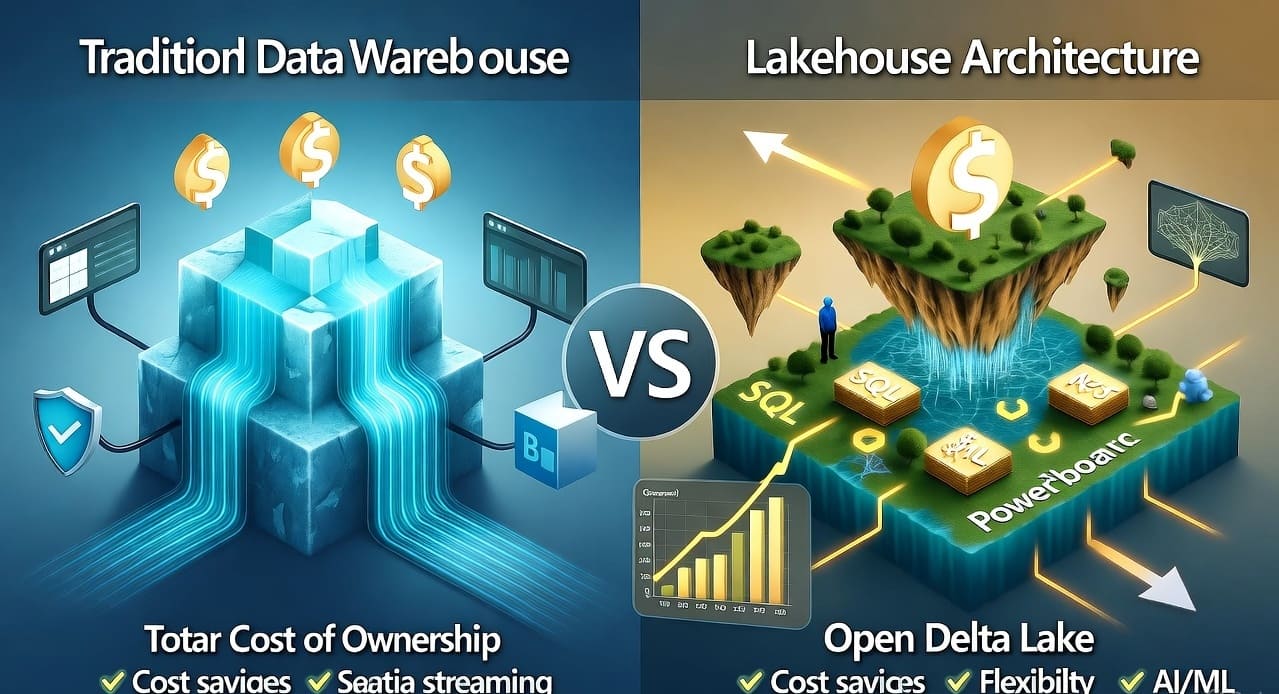
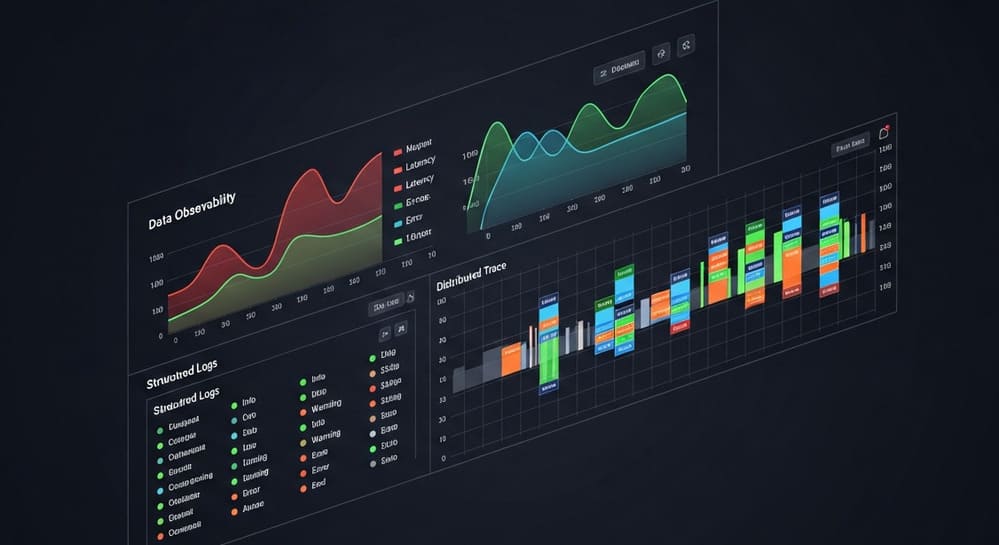

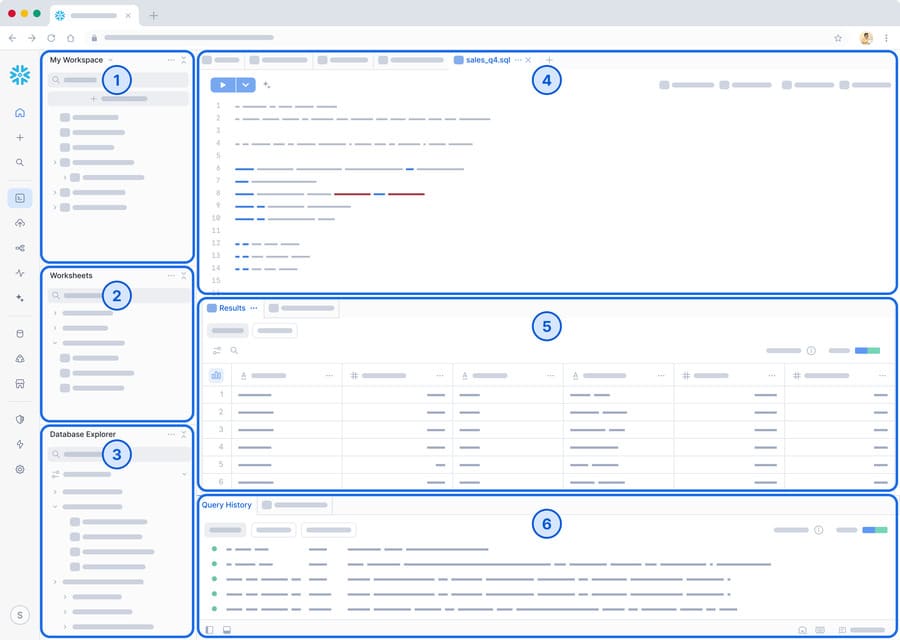

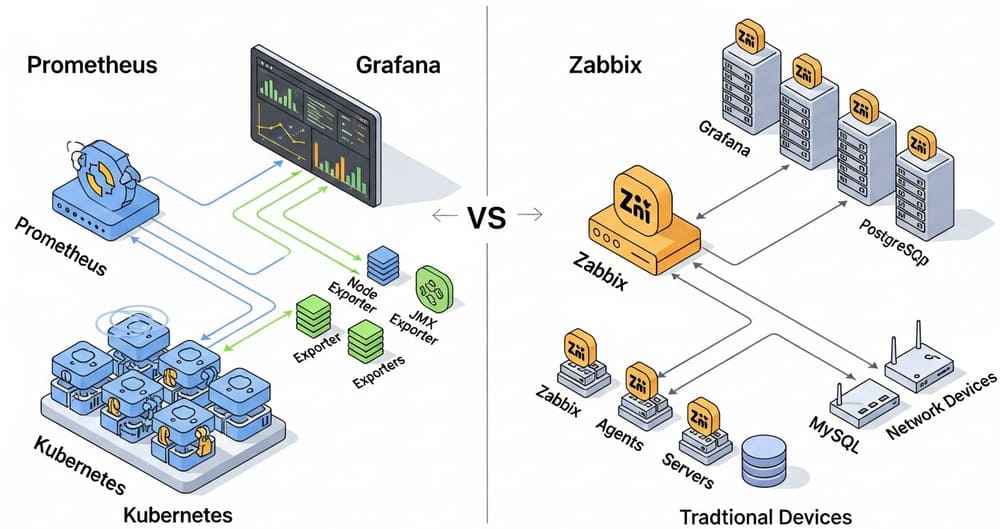
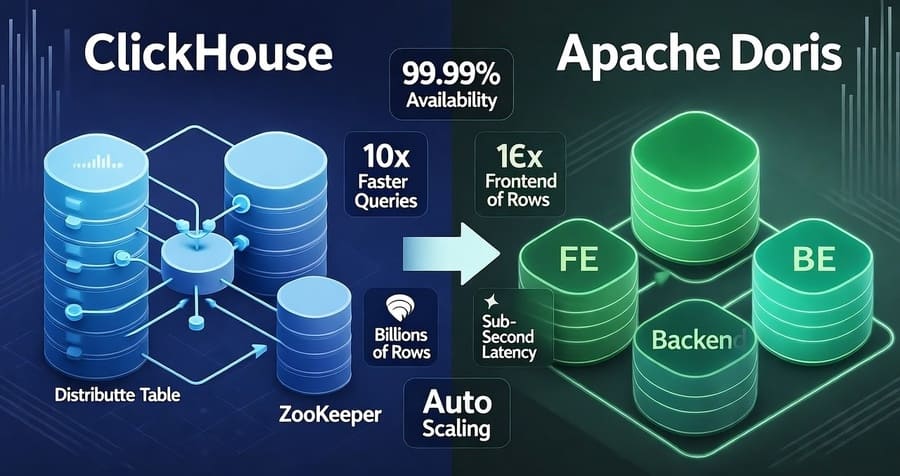
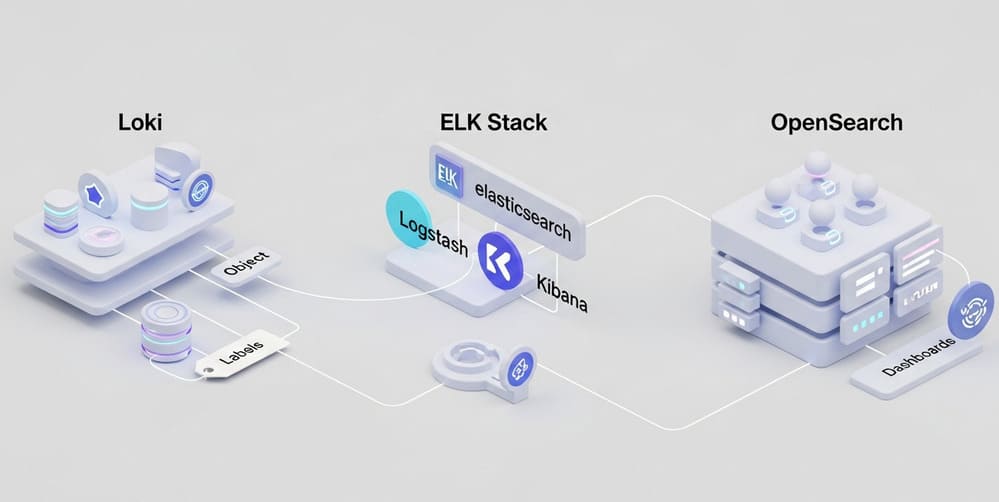

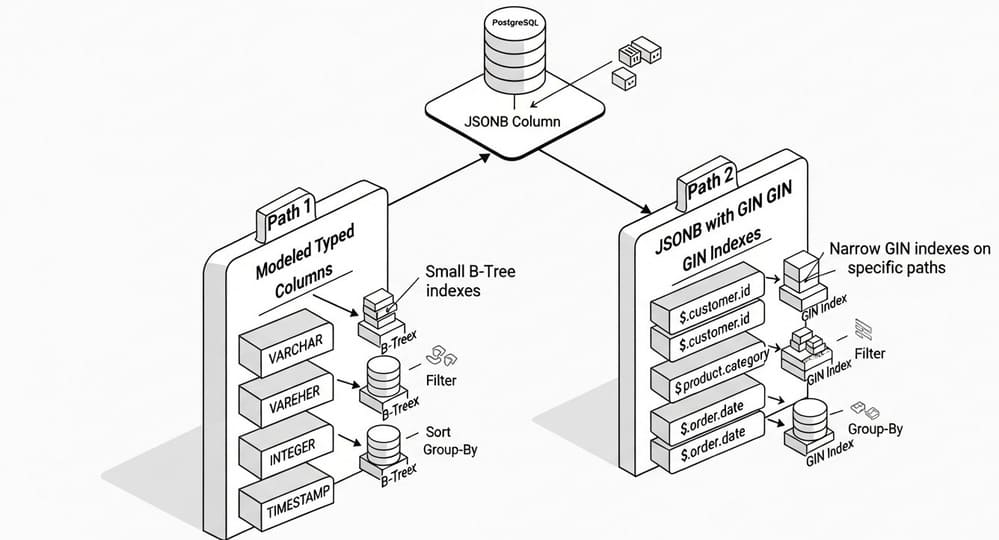
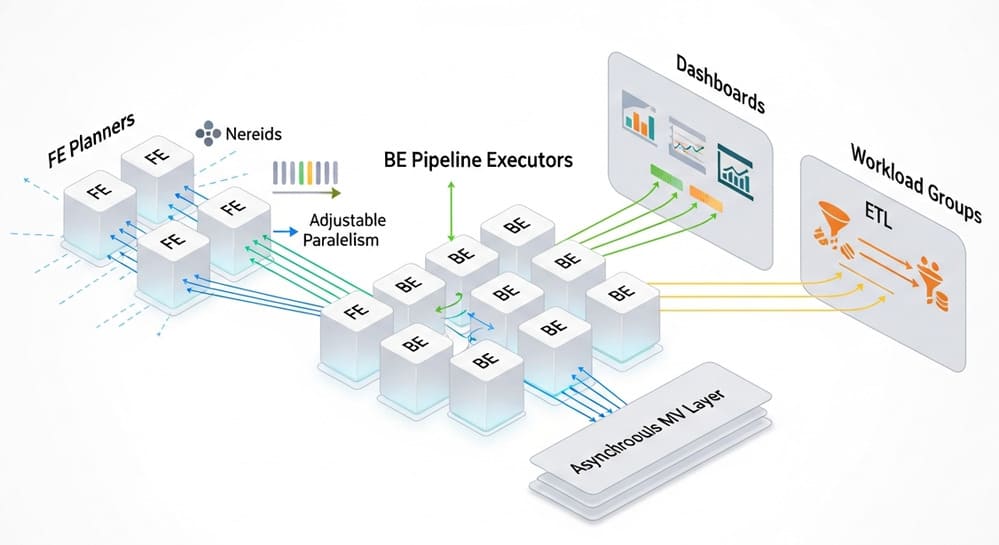
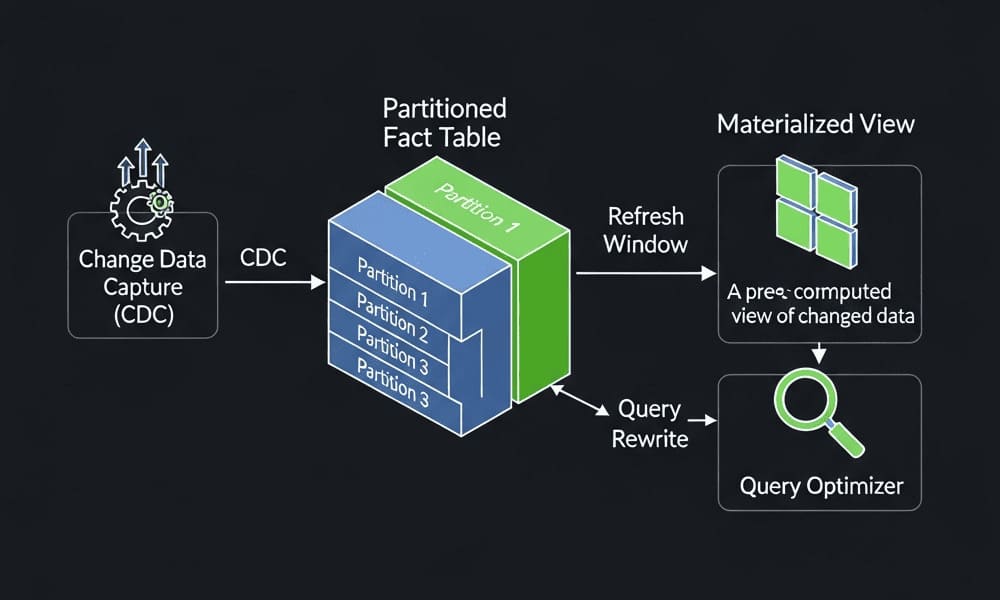
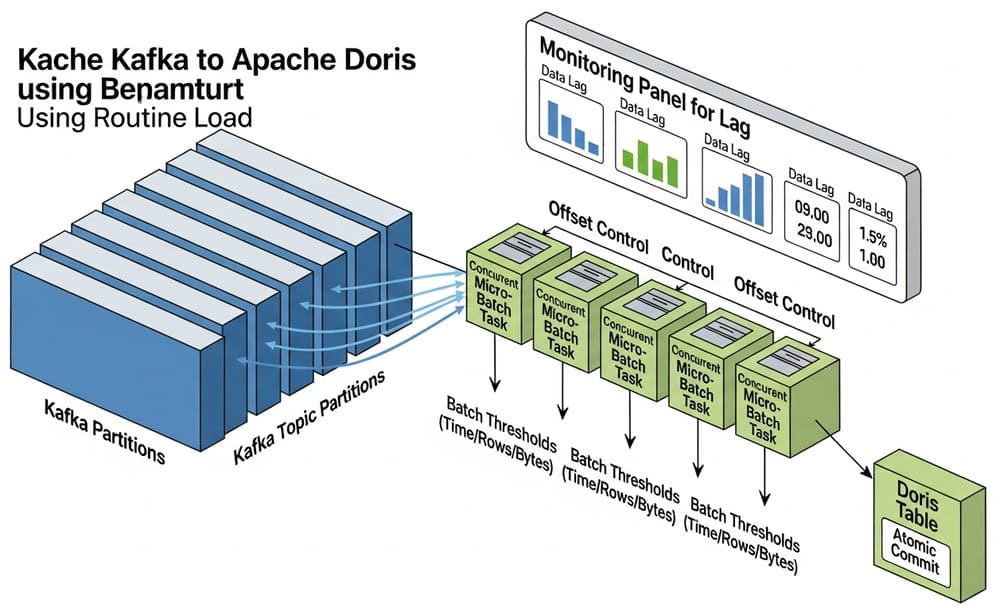
Leave a Reply